|
|
|
|
|
Oil On
Canvas, Real Flavor of Old Masters
|
|

|
ARTWORKS
INDEX
A B C D E F G H I J K L M N O P Q R S T U V W X Y Z |
ARTISTS
INDEX
A B C D E F G H I J K L M N O P Q R S T U V W X Y Z |
|
|
| | |
|
|
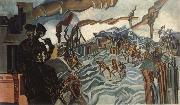 |
wyndham lewis -- Click Here
|
|
British painter and writer. He attended Rugby School and then studied painting at the Slade School of Art, London (1898-1901), where he earned a reputation both as a draughtsman and as a poet. His early artistic and intellectual mentors were Augustus John and Thomas Sturge Moore. From 1902 to 1908 Lewis travelled widely in Europe and studied in many of the major museums. He was one of the first British artists to be aware of, and interested in, Cubism and Expressionism, though little of his work before 1909 survives as evidence of his early development. In late 1908 Lewis settled in London and as well as painting began to publish satirical short stories that take a mechanistic view of human social behaviour, evident in the deliberately clumsy and grotesque figures in his art of the period 1909 to 1912. By 1910 he was including Cubist elements in his watercolour drawings (his preferred medium), and by 1912 he had developed his own linear vocabulary of forms, indebted to Cubist, Futurist and Expressionist forms, which gives an often ironic visual dimension to the themes of his fiction. Another important influence on his art was that of Japanese woodblock prints, as seen in the watercolour drawing later called The Vorticist (1912; Southampton, C.A.G.). By 1913 he was popularly seen as the leading British avant-garde artist.
|
|
|
|
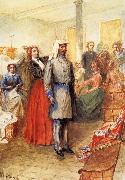 |
William Ludwell Sheppard -- Click Here
|
|
American, 1833-1912 |
|
 |
William Lionel Wyllie -- Click Here
|
|
(often simply W L Wyllie) (5 July 1851 - 6 April 1931) was a prolific English painter of maritime themes in both oils and watercolours.
Wyllie was born on 5 July 1851 at 67 Albany Street, Camden, London, the elder son of William Morison Wyllie (d. 1895), a prosperous minor-genre painter living in London and Wimereux, France. His mother was a singer, Katherine Smythe Wyllie (d. 1872).
Most of his early summers were spent in France with his parents. He began to draw from an early age, and his natural talent was encouraged by his father and by Lionel Smythe, his step brother. He was given a thorough artistic education; first at the Heatherley School of Fine Art, and then in 1866, aged 15, at the Royal Academy Schools. At the Royal Academy he studied under Edwin Henry Landseer, John Everett Millais and Frederic Leighton, among others.[2] He further demonstrated his precocious talent when he won the Turner Gold Medal in 1869 at the age of eighteen with Dawn after a Storm. |
|
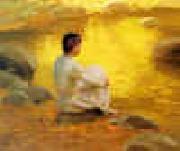 |
William Lees Judson -- Click Here
|
|
1842-1928
William Lees Judson was born in 1842 in Manchester, England, and moved to the United States with his parents when he was ten years old. After serving four years with the Illinois volunteers during the American Civil War, Judson studied art in New York and Paris. He settled in London, Ontario, where he became a successful portrait painter and art teacher. He moved to Chicago in 1890 but, suffering from failing health, he moved to Los Angeles in 1893. He settled on the banks of the Arroyo Seco in the Garvanza section of Los Angeles. A 1937 radio program noted that it was ??love at first sight?? when Judson saw the Arroyo Seco, and the area became his home for the rest of his life. Soon after his arrival, Judson was at the forefront of the Arroyo Guild of Craftsmen, an influential group of artists, sculptors and architects who fueled Southern California??s Arts and Crafts Movement. The beauty of the area stirred Judson to switch from portrait painting to landscapes, and his work attracted such favorable attention that in 1896 he was offered a professorship in drawing and painting at the University of Southern California. In the late 1890s, he founded the Los Angeles College of Fine Arts at his home in Garvanza (the present location of Judson Studios). In 1901, Judson's art college became USC??s College of Fine Arts, with Judson serving as dean from 1901 until his retirement in 1922. He died at his home in the studio building in October 1928. |
|
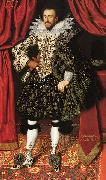 |
William Larkin -- Click Here
|
|
(early 1580s - 1619) was an English painter active from 1609 until his death in 1619, known for his iconic portraits of members of the court of James I of England which capture in brilliant detail the opulent layering of textiles, embroidery, lace, and jewellery characteristic of fashion in the Jacobean era, as well as representing numerous fine examples of oriental carpets in Renaissance painting.Larkin was born in London in the early 1580s, and lived in the parishes of St Sepulchre-without-Newgate, Holborn, and St Anne Blackfriars. He became a freeman of the Worshipful Company of Painter-Stainers on 7 July 1606 under the patronage of Lady Arbella Stuart and Edward Seymour, 1st Earl of Hertford. Married before 1612, he buried a stillborn son in that year; a son, William, in 1613; and a daughter, Mary, in January 1614/15, all at St Anne Blackfriars. Another daughter called Mary was alive at the time of his death. He died sometime between the witnessing of his will on 10 April 1619 and its proving on 14 May. The date of his burial is unknown because the parish records were destroyed in the Great Fire of London in 1666 |
|
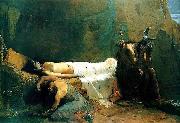 |
William de Leftwich Dodge -- Click Here
|
|
(1867-1935) was an American artist best known for his murals, which were commissioned for both public and private buildings.
Dodge was born at Liberty, Virginia in the Piedmont near Lynchburg. In 1879, his mother, Mary de Leftwich Dodge, an aspiring artist, moved her family to Europe. After living initially in Munich they moved to Paris, where she worked on art. Dodge later followed her example and became an artist. He spent most of his childhood years in France, where his mother was working on art. He studied at the École des Beaux Arts and took first place in the examinations in 1881. He also studied under Jean-Leon Gerôme and with Raphaël Collin at the Academie Colarossi,[1] and traveled to Munich for studies there.
|
|
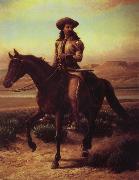 |
William de la Montagne Cary -- Click Here
|
|
American, 1840-1922 |
|
|
|
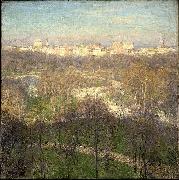 |
Willard Leroy Metcalf -- Click Here
|
|
(July 1, 1858 - March 9, 1925) was an American artist born in Lowell, Massachusetts. He studied at the School of the Museum of Fine Arts, Boston, and later attended Academie Julian, Paris. After early figure-painting and illustration, he became prominent as a landscape painter. He was one of the Ten American Painters who in 1897 seceded from the Society of American Artists. For some years he was an instructor in the Womans Art School, Cooper Union, New York, and in the Art Students League, New York. In 1893 he became a member of the American Watercolor Society, |
|
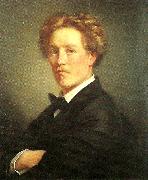 |
Wilhelmina Lagerholm -- Click Here
|
|
1826-1917 Konstakademien Lagerholm studerade samtidigt med Malmström såväl vid konstakademien i stockholm som för couture i paris. |
|
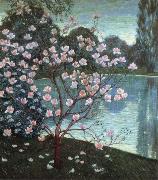 |
wilhelm list -- Click Here
|
|
Siegmund Wilhelm List (May 14, 1880 ?C August 17, 1971), was a German field marshal during World War II, and at the start of the war was based in Slovakia in command of the Fourteenth Army.
List was born in Oberkirchberg near Ulm, Weerttemberg, Germany in 1880 and entered the Bavarian Army in 1898 as a cadet. In 1900 he was promoted to Lieutenant and in 1913 he joined the general staff as a Hauptmann. He served as a staff officer in World War I.
After the war List stayed in the Reichswehr and most of his assignments were as an administrator. In 1927 he was promoted to Oberst, in 1930 he was promoted to General-Major and in 1932 he was promoted to General-Leutnant. In 1938 after the Anschluss of Austria he was made responsible for integrating the Bundesheer into the Wehrmacht.
During 1939 List commanded the German 14th Army in the invasion of Poland. From 1939 to 1941 he commanded the German 12th Army in France and Greece. During 1941 he was Commander-in-Chief South-East. In July 1942 he was Commander-in-Chief of Army Group A on the Eastern Front in the Soviet Union.
|
|
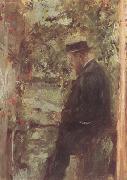 |
Wilhelm Leibl -- Click Here
|
|
German Realist Painter, 1844-1900
German painter, draughtsman and etcher. In 1861 he abandoned his apprenticeship as a locksmith in order to train as a precision instrument maker, though a month or so later he decided to train as an artist, at first under the Cologne history painter and writer Hermann Becker (1817-85). In 1863 he moved to Munich; he studied there from March 1864, at the Akademie der Bildenden K?nste, initially under Philipp von Foltz and Alexander Straehuber, drawing from plaster casts, and later in Hermann Ansch?tz's painting class. Here, Arthur von Ramberg (1819-75) stimulated Leibl's sensitivity to colour; and Karl Theodor von Piloty encouraged him to observe reality and incorporate its lessons boldly into compositions on historical themes. From the start, however, Leibl tended to think of his pictures in terms of form rather than content. While at the Akademie he first reached a standard of excellence with his draughtmanship, which is notable for its directness and objectivity. As an artist, Leibl's early works were not especially promising. However, as occurred throughout his career, a long period of mediocrity was crowned by an unexpected masterpiece, such as his portrait drawing of Aunt Josepha (c. 1864; Cologne, Wallraf-Richartz-Mus.). This is particularly striking for Leibl's use of the hands to add to the expression of the sitter's character and mood, a device he was to use frequently in later work. In Munich, Leibl supplemented the teaching of the Akademie by studying the works of the Old Masters in the Alte Pinakothek: he paid particular attention to painters of the Baroque period such as van Dyck, Cornelis de Vos and Rubens, and also to other great masters of portraiture such as Frans Hals and Vel?zquez. The presentation of the subject found in such works is reflected in Leibl's portrait of Frau Gedon (1869; Munich, Neue Pin.). When the work was shown at the Grossen Internationale Kunstausstellung in Munich in 1869 it was singled out as the best oil painting of the exhibition by Gustave Courbet and, as a result, Leibl was honoured with an invitation to Paris, where he arrived on 13 November 1869. |
|
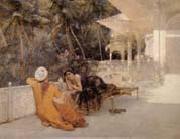 |
Weeks Lord-Edwin -- Click Here
|
|
189-1903
American artist, was born at Boston, Massachusetts, in 1849. He was a pupil of Leon Bonnat and of Jean-Leon Gerome, at Paris. He made many voyages to the East, and was distinguished as a painter of oriental scenes. In 1895 he wrote and illustrated a book of travels, From the Black Sea through Persia and India, and two years later he published Episodes of Mountaineering. He died in November 1903. He was a member of the Legion d'honneur, France, an officer of the Order of St. Michael, Germany, and a member of the Secession, Munich. |
|
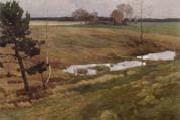 |
Walter Leistikow -- Click Here
|
|
1865-1908,German painter, decorative artist, etcher, exhibition organizer and writer. He studied painting briefly in 1883, at the Akademie in Berlin, but he was dismissed after six months as 'untalented'. From 1883 to 1885 he trained with the painter Hermann Eschke (1823-1900) and from 1885 to 1887 with the Norwegian painter Hans Fredrik Gude. Gude had a decisive influence on the style of Leistikow's early works, as is especially clear in Leistikow's light coastal landscapes with figures. His most significant work from this period, however, is Brickworks near Eckernferde (1887; ex-Gem?ldegal. Neue Meister, Dresden). Leistikow's dismissal from the Akademie concentrated his attention on issues of artistic policy. When the German government decided not to send works for exhibition in the Exposition Universelle in Paris in 1889, Leistikow himself organized the dispatch of works to Paris. In 1892, |
|
|
|
|
|
|
|
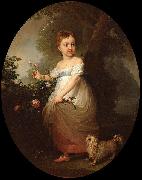 |
Vladimir Lukich Borovikovsky -- Click Here
|
|
(Russian: July 24 O.S. 1757 - April 6 O.S. 1825) was a Ukrainian-born painter who dominated Russian portraiture at the turn of the 19th century.
ladimir Borovikovsky was born dymyr Borovyk in Myrhorod (now Ukraine) on July 24, 1757. His father, Luka Borovyk was a Ukrainian Cossack and an amateur icon painter. According to the family tradition, all four of Borovyk's sons served in Myrhorod regiment, but Volodymyr retired early at the rank of poruchik and devoted his life to art mostly icon painting for local churches.
Borovikovsky may have lived the remainder his life as an amateur painter in a provincial town if not for an unexpected event. His friend Vasyl Kapnist was preparing an accommodation for Empress Catherine II in Kremenchuk during her travel to newly conquered Crimea. Kapnist asked Borovikovsky to paint two allegoric paintings (Peter I of Russia and Catherine II as peasants sowing seeds and Catherine II as a Minerva) for her rooms. The paintings so pleased the Empress that she requested that the painter move to Saint Petersburg.
Portrait of Maria Lopukhina, 1797After September 1788 Borovikovsky lived in Saint Petersburg where he changed his surname from the Cossack "Borovyk" to the more aristocratic-sounding "Borovikovsky". For his first ten years in Saint Petersburg, he lived in the house of the poet, architect, musician and art theorist, Prince Nikolay Lvov, whose ideas strongly influenced Borovikovsky's art. At 30-years-old, he was too old to attend Imperial Academy of Arts, so he took private lessons from Dmitry Levitzky and later from Austrian painter Johann Baptist Lampi. |
|
|
|
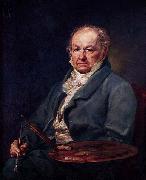 |
Vicente Lopez y Portana -- Click Here
|
|
(September 19, 1772, Valencia, Spain CJuly 22, 1850, Madrid, Spain) was a Spanish painter, considered the best portrait painter of his time.
Vicente Lepez y Portaña was born in Valencia on September 19, 1772. His parents were Cristebal Lepez Sanchordi and Manuela Portaña Meer. Vicente Lepez began formally studying painting in Valencia at the age of thirteen, he was a disciple of father Antonio de Villanueva, a Franciscan monk, and he studied at the Academy of San Carlos in his native city. He was seventeen when he won first prize in drawing and coloring receiving a scholarship to study in the prestigious Academia Real de Bellas Artes de San Fernando in Madrid. For the following three years in Madrid, he apprenticed with the Valencian painter, Mariano Salvador Maella. Vicente Lepez returned to Valencia in 1794 and subsequently became vice-director of painting at the Academy where he had studied as a boy. In 1795 he married Maria Piquer, they had two sons: Bernardo Lepez Piquer and Luis (1802-1865), who were also painters, following their father's style but with little accomplishments. In 1801 Lepez was named President of the Academy of San Carlos. |
|
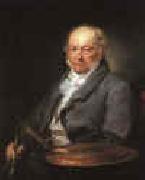 |
Vicente Lopez -- Click Here
|
|
1772-1850
Spanish
Vicente Lopez Gallery
was an Argentine writer and politician who acted as interim President of Argentina from July 7, 1827 to August 18, 1827. He also wrote the lyrics of the Argentine National Anthem adopted in May 11, 1813.
Lopez began his primary studies in the San Francisco School, and later studied in the Real Colegio San Carlos, today the Colegio Nacional de Buenos Aires. He obtained a doctorate of laws in the University of Chuquisaca. He served as a captain in the Patriotic Regiment during the English invasions. After the Argentine victory he composed a poem entitled El triunfo argentino (The Argentine Triumph). He participated in the Cabildo Abierto of May 22, 1810 and supported the formation of the Primera Junta. He had good relations with Manuel Belgrano. When the royalist members of the city government of Buenos Aires were expulsed, he was elected mayor of the city; he was an enemy of the party of Cornelio Saavedra and one of the creators of the First Triumvirate, of which he was the Treasurer.
Lopez was a member of the Constituent Assembly of year XIII, representing Buenos Aires. At the request of the Assembly, he wrote the lyrics to a "patriotic march", which eventually became the Argentine National Anthem. It was a military march, whose music was composed by the Catalan Blas Parera; it was approved on March 11, 1813. The first public reading was at a tertulia on May 7 in the house of Mariquita Sanchez de Thompson. It displaced a different march, written by Esteban de Luca, which would have been the hymn if not for the more militaristic Lopez. |
|
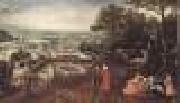 |
VALKENBORCH, Lucas van -- Click Here
|
|
Flemish painter (b. ca. 1530, Leuven, d. 1597, Frankfurt/Main).
|
|
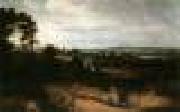 |
VADDER, Lodewijk de -- Click Here
|
|
Flemish painter (b. 1605, Bruxelles, d. 1655, Bruxelles)
Flemish painter, draughtsman, engraver and tapestry designer. He was received as a master in the Brussels Guild of St Luke on 15 May 1628, probably, like his brother Hubert de Vadder, after an apprenticeship to his elder brother, Philippe de Vadder (Coeckelberghs). Lodewijk is best known as a landscape painter, although he also executed landscape engravings and drawings. He was granted a privilege to make tapestry cartoons by the Brussels city magistrate in 1644. In this capacity he worked mainly for weavers such as Jean Courdijn and Baudouin van Beveren. The latter referred to him as the best landscape painter in the country |
|
|
|
 |
UDEN, Lucas van -- Click Here
|
|
Flemish painter (b. 1595, Antwerpen, d. 1672, Antwerpen).
Flemish painter, draughtsman and engraver. He was the son of Artus van Uden (b 1544), town painter of Antwerp, and grandson of Pieter van Uden (i) ( fl 1553), founder of a noted tapestry and silk factory in the city. Lucas was probably trained by his father and in 1626-7 was enrolled in the Antwerp Guild of St Luke as a 'master's son'. On 14 February 1627 he married Anna van Woelput (d 1667). On 31 December 1649 he was registered as no longer living in the city, |
|
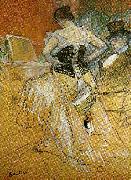 |
toulouse-lautrec -- Click Here
|
|
Fils d'Alphonse, comte Alphonse de Toulouse-Lautrec-Monfa (1838-1913) et d'Adele Tapie de Celeyran (1841-1930), il grandit entre Albi, le chateau du Bosc (demeure de ses grands-parents) et le chateau de Celeyran.
Henri de Toulouse-Lautrec est ne dans l'une des plus vieilles familles de France, descendant en effet en droite ligne des comtes de Toulouse, qui furent jusqu'au XIIIe si??cle parmi les plus puissants feodaux du royaume. Cependant, cette branche cadette, malgre son nom illustre, ne vit que comme une famille aisee de l'aristocratie de province. |
|
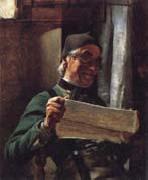 |
Tito Lessi -- Click Here
|
|
Italian artist, 1858-1917 |
|
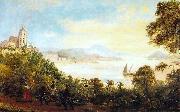 |
Thomas Lyde Hornbrook -- Click Here
|
|
painted Vista do Outeiro da Gloria in 1838 |
|
 |
Thomas Luny -- Click Here
|
|
(1759-1837), born in Cornwall, probably at St Ewe, was an English artist and painter, mostly of seascapes and other marine-based works. At the age of eleven, Luny left Cornwall to live in London. There he became the apprentice of Francis Holman, a marine painter who would have a great and long lasting artistic influence on Luny: Luny remained until 1780 in Holman's London studio, which, was first situated in Broad Street, St. George, and later relocated to Old Gravel Lane.
In September 1777, Luny left Holman's studio for a while, to journey to France. During this particular expedition, Luny almost certainly strayed from France itself; his first exhibited picture in London, seen at the Society of Artists that same year, was given the title A distant view of the island of Madeira and Porto Santo, suggesting that an engraving had inspired his choice of subject. Similarly, it is unlikely that Luny was on hand for the Battle of the Nile, 1798, and the bombardment of Algiers, 1816, both of which he illustrated with dramatic atmosphere and credible realism.
After leaving Holman's studio in 1780, Luny moved to Leadenhall Street during 1783. It was around this time that Luny was frequently exhibiting at the Royal Academy, in a total of twenty-nine exhibitions between 1780 and 1802. In Leadenhall Street, Luny became acquainted with a "Mr. Merle", a dealer and framer of paintings who promoted Luny's paintings for over twenty years, to great success. Luny also found a wealthy source of business in Leadenhall Street, where the British East India Company had their headquarters; their officers commissioned many paintings and portraits from Luny. This relationship between the Company and Luny also had several non-monetary benefits for Luny; it seems probable that, considering the great detail and realistic look of many of his sketches of locations such as Naples, Gibraltar, and Charleston, South Carolina, Luny was occasionally invited as a guest on the Company's ships on special occasions and voyages. |
|
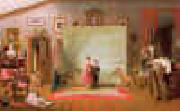 |
Thomas Le Clear -- Click Here
|
|
1818-1882
Thomas Le Clear Gallery |
|
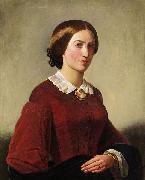 |
Theodor Leopold Weller -- Click Here
|
|
Germany (1802 -1880 ) - Drawer
painted Portrat einer Dame mit Brosche in19th century
|
|
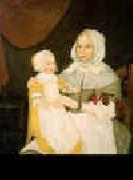 |
The Freake Limner -- Click Here
|
|
American Colonial Era Painter, active 1670-ca.1680 |
|
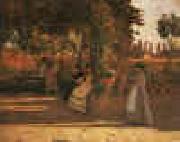 |
Sylvestro Lega -- Click Here
|
|
1826-1895
Italian
Sylvestro Lega Gallery |
|
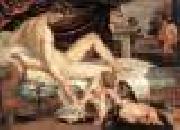 |
SUSTRIS, Lambert -- Click Here
|
|
Dutch painter (b. 1515/20, Amsterdam, d. after 1568, Padova).
|
|
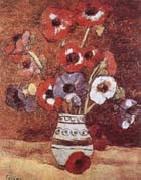 |
Stefan Luchian -- Click Here
|
|
Romanian Painter, 1868-1916
Romanian painter. He studied at the School of Fine Arts in Bucharest, graduating in 1889 and continuing his studies at the Akademie der Bildenden Kenste in Munich and in Paris at the Academie Julian, where he was a student of William-Adolphe Bouguereau. He rejected the rigidity of academic painting early in his career, however. The Last Autumn Race (1892; Bucharest, Mus. A.), one of the few paintings known from this period, clearly illustrates the influence of Manet and Impressionism on his early work. On his return to Romania in 1892 Luchian, unwilling to restrict his work to merely copying the French artists, struggled to create an original style. In 1900 he was left partially paralysed by a spinal disease, but he continued to work, and it is during the next years that he created his most accomplished works. His self-portraits (e.g. 1907; Bucharest, Mus. A.) are clear evidence of his determination to overcome this personal tragedy; far from inspiring pity, these paintings emphasize the depth and the strength of his inner life. It is in landscapes such as Willows at Chiajna (c. 1907; Cluj-Napoca, Mus. A.), however, that his commitment becomes even more apparent, with joyful rhythms created by means of broad brushstrokes and contrasts of bright colours next to delicate tones. Towards the end of his life Luchian became completely immobilized. During this time flowers were his favourite subject (e.g. Safta, the Flower Girl; Bucharest, N. Mus. A.; see also ROMANIA, fig. 9), and they became a metaphorical bridge between the artist and the outside world. The colours are still bright in these last paintings, and the loss of pastel tones makes the contrast more dramatic. |
|
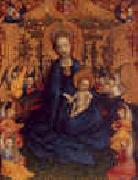 |
Stefan Lochner -- Click Here
|
|
German painter (b. ca. 1400, Meersburg am Bodensee, d. 1451, Köln
was a German late Gothic painter.
His style, famous for its clean appearance, combined Gothic attention towards long flowing lines with brilliant colours with a Flemish influenced realism and attention to detail.
He worked mainly in Cologne, Germany, and his principal work is the triptych of the Altar of the City Patrons (done in the 1440s, which is in the Cologne Cathedral), which represents the city in homage to the infant Jesus. The epitome of his style is Madonna of the Rose Bower (c. 1450, housed in the Wallraf-Richartz Museum in Cologne), showing the Virgin and Child reposing in a blooming rose arbor and attended by Lochner's characteristic child Angels. |
|
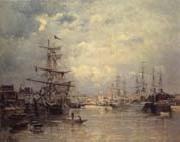 |
Stanislas lepine -- Click Here
|
|
French Impressionist Painter, 1836-1892
|
|
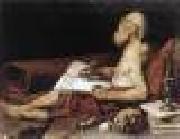 |
SPADA, Lionello -- Click Here
|
|
Italian Baroque Era Painter, 1576-1622
Italian painter, active mainly in Emilia. His signature was an L placed across a sword [Ital. spada=sword]. His work shows influence of the grand manner of the Carracci, as in The Burning of Heretical Books (San Domenico, Bologna), and of Caravaggio's naturalism, seen in dramatic religious and genre scenes such as The Way to Calvary (Parma). In his late works his manner became softer and warmer under Correggio's influence. An example is The Marriage of St. Catherine (Parma). |
|
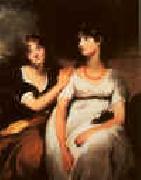 |
Sir Thomas Lawrence -- Click Here
|
|
1769-1830
British
Sir Thomas Lawrence Galleries
was a notable English painter, mostly of portraits.
He was born in Bristol. His father was an innkeeper, first at Bristol and afterwards at Devizes, and at the age of six Lawrence was already being shown off to the guests of the Bear as an infant prodigy who could sketch their likenesses and declaim speeches from Milton. In 1779 the elder Lawrence had to leave Devizes, having failed in business and Thomas's precocious talent began to be the main source of the family's income; he had gained a reputation along the Bath road. His debut as a crayon portrait painter was made at Oxford, where he was well patronized, and in 1782 the family settled in Bath, where the young artist soon found himself fully employed in taking crayon likenesses of fashionable people at a guinea or a guinea and a half a head. In 1784 he gained the prize and silver-gilt palette of the Society of Arts for a crayon drawing after Raphael's "Transfiguration," and presently beginning to paint in oil.
|
|
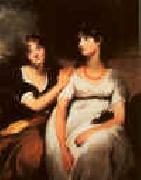 |
Sir Thomas Lawrence -- Click Here
|
|
1769-1830
British
Sir Thomas Lawrence Galleries
was a notable English painter, mostly of portraits.
He was born in Bristol. His father was an innkeeper, first at Bristol and afterwards at Devizes, and at the age of six Lawrence was already being shown off to the guests of the Bear as an infant prodigy who could sketch their likenesses and declaim speeches from Milton. In 1779 the elder Lawrence had to leave Devizes, having failed in business and Thomas's precocious talent began to be the main source of the family's income; he had gained a reputation along the Bath road. His debut as a crayon portrait painter was made at Oxford, where he was well patronized, and in 1782 the family settled in Bath, where the young artist soon found himself fully employed in taking crayon likenesses of fashionable people at a guinea or a guinea and a half a head. In 1784 he gained the prize and silver-gilt palette of the Society of Arts for a crayon drawing after Raphael's "Transfiguration," and presently beginning to paint in oil.
|
|
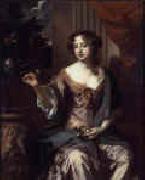 |
Sir Peter Lely -- Click Here
|
|
1618-1680
Dutch (Resident In UK)
Sir Peter Lely Art Locations
Sir Peter Lely (14 September 1618 - 30 November 1680) was a painter of Dutch origin. He was the most popular portrait artist in England from soon after he arrived in the country in the 1640s to his death. He also owned a major collection of art, especially drawings by other artists.
Lely was born Pieter van der Faes to Dutch parents in Soest in Westphalia,[1] where his father was an officer serving in the armed forces of the Elector of Brandenburg. Lely studied painting in Haarlem, where he may have been apprenticed to Pieter de Grebber. He become a master of the Guild of Saint Luke in Haarlem in 1637. He is reputed to have adopted the surname "Lely" (also occasionally spelled Lilly) from a heraldic lily on the gable of the house where his father was born in The Hague.
He arrived in London in around 1641. His early English paintings, mainly mythological or religious scenes, or portraits set in a pastoral landscape, show influences from Anthony van Dyck and the Dutch baroque. Lely's portraits were well received, and he succeeded Anthony van Dyck as the most fashionable portrait artist in England. He became a freeman of the Painter-Stainers' Company in 1647 and was portrait artist to Charles I, but his talent ensured that his career was uninterrupted by Charles's execution, and he served Oliver Cromwell, whom he painted "warts and all", and Richard Cromwell. In the years around 1650 the poet Sir Richard Lovelace wrote two poems about Lely ?? Peinture and "See what a clouded majesty...."
Two ladies from the Lake family, 1650. Held by the Tate Gallery.[1]After the English Restoration in 1660, Lely was appointed as Charles II's Principal Painter in Ordinary in 1661, with a stipend of £200 per year, as Van Dyck had enjoyed in the previous Stuart reign. Lely became a naturalised British subject in 1662.
Demand was high, and Lely and his school were prolific. After Lely painted a sitter's head, Lely's pupils would often complete the portrait in one of a series of numbered poses. As a result Lely is the first English painter who has left "an enormous mass of work." Among his most famous paintings are a series of 10 portraits of ladies from the Royal court, known as the "Windsor Beauties", formerly at Windsor Castle but now at Hampton Court Palace; a similar series for Althorp; a series of 12 of the admirals and captains who fought in the Second Anglo-Dutch War, known as the "Flagmen of Lowestoft", now mostly owned by the National Maritime Museum in Greenwich; and his Susannah and the Elders at Burghley House. His most famous non-portrait work is probably Nymphs by a fountain in Dulwich Picture Gallery.
Lely played a significant role in introducing the mezzotint to Britain, as he realized its possibilities for publicising his portraits. He encouraged Dutch mezzotinters to come to Britain to copy his work, laying the foundations for the English mezzotint tradition.
Lely was knighted in 1680. He died soon afterwards at his easel in Covent Garden, while painting a portrait of the Duchess of Somerset. He was buried at St Paul's Church, Covent Garden. He collected Old Masters during his life, with examples by Veronese, Titian, Claude Lorrain and Rubens, and a fabulous collection of drawings. His collection was broken up and sold after his death, raising the immense sum of £26,000. Some items in it which had been acquired by Lely from the Commonwealth dispersal of Charles I's art collections, such as the Lely Venus, were re-acquired by the royal collection. |
|
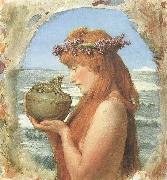 |
Sir Lawrence Alma-Tadema,OM.RA,RWS -- Click Here
|
|
1836-1912
|
|
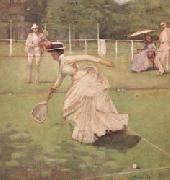 |
Sir John Lavery,RA -- Click Here
|
|
1856-1941
The artist John Lavery was born in Belfast, and studied in Scotland at the Glasgow School of Art from about 1874. He was in London from 1879-81 (he studied at Heatherley's School of Art for six months), and later in Paris, where he was influenced by Bastien-Lepage. He then returned to Glasgow, becoming a leading member of informal group of painters known as the Glasgow School (James Guthrie was another member), with work characterised by lack of a storyline, but great energy. Lavery achieved his pinnacle in the 1880s, with exhibitions in Europe and America, and as a leading portraitist, he was chosen to paint the State visit of Queen Victoria to the International Exhibition in Glasgow, 1888 - there were some 250 portraits in that picture. From 1890 he visited Morocco frequently, and he changed his British base to London in 1896, where he used a studio belonging to Alfred East. He was elected ARA in 1911, |
|
 |
Sir John Lavery -- Click Here
|
|
Irish Painter, 1856-1941
Irish painter. The son of an unsuccessful publican, he was orphaned at the age of three and was brought up by relatives, initially in the north of Ireland and then in Ayrshire. He became an apprentice retoucher to a Glasgow photographer and attended the Haldane Academy, Glasgow, in the 1870s. After spending a winter term at Heatherley's School of Art, London, he moved in 1881 to Paris where he studied at the Acad?mie Julian. At this time he was influenced by Jules Bastien-Lepage and painted in a plein-air naturalist style |
|
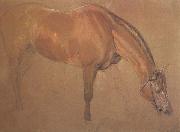 |
Sir edwin landseer,ra -- Click Here
|
|
1802-1873
Painter, draughtsman, sculptor and etcher, brother of (3) Charles Landseer. He became the best-known member of the family and was one of the most highly respected and popular British painters of the 19th century. He was first trained by his father, who taught him etching, and he then studied with Benjamin Robert Haydon and at the Royal Academy Schools in London. Precociously gifted, he drew competently from childhood and in 1813 he won the Silver Palette for draughtsmanship at the Society of Arts. In 1815 he exhibited at the Royal Academy for the first time, showing some drawings of a mule and of the heads of dogs. From an early age he was a frequent visitor to the menagerie in Exeter Change in the Strand, London, where he drew lions, monkeys and other animals. |
|
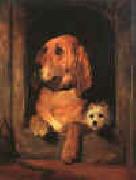 |
Sir Edwin Landseer -- Click Here
|
|
1803-1874
British
Sir Edwin Landseer Galleries
Landseer was something of a child prodigy whose artistic talents were recognized early on; he studied under several artists, including his father John Landseer, an engraver, and Benjamin Robert Haydon, the well-known and controversial history painter who encouraged the young Landseer to perform dissections in order to fully understand animal musculature and skeletal structure.
At the age of just 13, in 1815, Landseer exhibited works at the Royal Academy. He was elected an Associate of the Royal Academy at the age of 24, and an Academician of the Royal Academy five years later in 1831. He was knighted in 1850, and although elected President of the Royal Academy in 1866 he declined the invitation.
Landseer was a notable figure in 19th century British art, and his works can be found in Tate Britain, the Victoria and Albert Museum, Kenwood House and the Wallace Collection in London. He also collaborated with fellow painter Frederick Richard Lee.
Windsor Castle in Modern Times (1841-1845)
Queen Victoria and her family at Windsor Castle.Landseer's popularity in Victorian Britain was considerable. He was widely regarded as one of the foremost animal painters of his time, and reproductions of his works were commonly found in middle-class homes. Yet his appeal crossed class boundaries, for Landseer was quite popular with the British aristocracy as well, including Queen Victoria, who commissioned numerous portraits of her family (and pets) from the artist. Landseer was particularly associated with Scotland and the Scottish Highlands, which provided the subjects (both human and animal) for many of his important paintings, including his early successes The Hunting of Chevy Chase (1825-1826) and An Illicit Whiskey Still in the Highlands (1826-1829), and his more mature achievements such as the majestic stag study Monarch of the Glen (1851) and Rent Day in the Wilderness (1855-1868).
Saved (1856)
Landseer's paintings of dogs were highly popular among all classes of society.So popular and influential were Landseer's paintings of dogs in the service of humanity that the name Landseer came to be the official name for the variety of Newfoundland dog that, rather than being black or mostly black, features a mix of both black and white; it was this variety Landseer popularized in his paintings celebrating Newfoundlands as water rescue dogs, most notably Off to the Rescue (1827), A Distinguished Member of the Humane Society (1838), and Saved (1856), which combines Victorian constructions of childhood with the appealing idea of noble animals devoted to humankind ?? a devotion indicated, in Saved, by the fact the dog has rescued the child without any apparent human direction or intervention.
In his late 30s Landseer suffered what is now believed to be a substantial nervous breakdown, and for the rest of his life was troubled by recurring bouts of melancholy, hypchondria, and depression, often aggravated by alcohol and drug use (Ormond, Monarch 125). In the last few years of his life Landseer's mental stability was problematic, and at the request of his family he was declared insane in July 1872.
Landseer's death on 1 October 1873 was widely marked in England: shops and houses lowered their blinds, flags flew at half-staff, his bronze lions at the base of Nelson's column were hung with wreaths, and large crowds lined the streets to watch his funeral cortege pass (Ormond, Monarch 135). Landseer was buried in St Paul's Cathedral, London . |
|
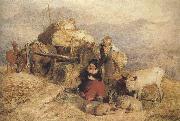 |
Sir edwin henry landseer,R.A. -- Click Here
|
|
1802-1873
Painter, draughtsman, sculptor and etcher, brother of (3) Charles Landseer. He became the best-known member of the family and was one of the most highly respected and popular British painters of the 19th century. He was first trained by his father, who taught him etching, and he then studied with Benjamin Robert Haydon and at the Royal Academy Schools in London. Precociously gifted, he drew competently from childhood and in 1813 he won the Silver Palette for draughtsmanship at the Society of Arts. In 1815 he exhibited at the Royal Academy for the first time, showing some drawings of a mule and of the heads of dogs. From an early age he was a frequent visitor to the menagerie in Exeter Change in the Strand, London, |
|
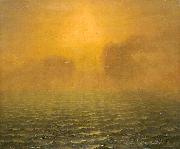 |
Simon Mathurin Lantara -- Click Here
|
|
(24 March 1729 - 22 December 1778) was a French landscape painter.
He was born at Oncy. His father was a weaver, and he himself began life as a herdboy; but, having attracted the notice of Gille de Reumont, a son of his master, he was placed under a painter at Versailles. Endowed with great facility and real talent, his powers found ready recognition; but he found the constraint of a regular life and the society of educated people unbearably tiresome; and as long as the proceeds of the last sale lasted he lived careless of the future in the company of obscure workmen. Rich amateurs more than once attracted him to their houses, only to find that in ease and high living Lantara could produce nothing. He died in Paris in 1778.
His works, now much prized, are not numerous; the Louvre has one landscape, Morning, signed and dated 1761. Émile Bernard, Joseph Vernet, and others are said to have added figures to his landscapes and sea-pieces. Engravings after Lantara will be found in the works of Lebas, Piquenot, Duret, Mouchy and others. In 1809 a comedy called Lantara, or the Painter in the Pothouse, was brought out at the Vaudeville with great success.
|
|
|
|
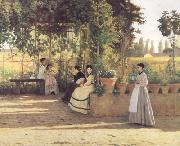 |
Silvestro lega -- Click Here
|
|
Italian Realist Painter, 1826-1895
Italian painter. From 1843 to 1847 he attended the Accademia di Belle Arti, Florence, studying drawing under Benedetto Servolini (1805-79) and Tommaso Gazzarini (1790-1853), then, briefly, painting under Giuseppe Bezzuoli. About 1847 he entered Luigi Mussini's school (see PURISMO), where the teaching emphasized the 15th-century Florentine principles of drawing and orderly construction. Then and for some years afterwards he continued to attend the Scuola del Nudo of the Accademia. After fighting in the military campaigns for Italian independence (1848-9) Lega resumed his training, this time under Antonio Ciseri, executing his first large-scale painting, Doubting Thomas (1850; Modigliana, Osp. Civ.). In 1852 he won the Concorso Trienniale dell'Accademia with David Placating Saul |
|
 |
School of Latium -- Click Here
|
|
First half of the thirteenth century |
|
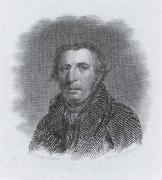 |
Samuel Lovett Waldo -- Click Here
|
|
American Painter, 1783-1861
American painter. After attending a country school and working on his father farm, he decided at the age of 16 to become an artist. He took lessons from Joseph Steward (1753-1822), a retired minister who operated a portrait studio in Hartford, CT. Waldo opened his own studio in Hartford in 1803, before moving on to paint portraits in Litchfield, CT, and Charleston, SC. In 1806, bearing letters of introduction to Benjamin West and John Singleton Copley, Waldo travelled to London, where he studied at the Royal Academy. His portrait of Mr M Dougle (untraced) was shown at the Royal Academy in 1808. |
|
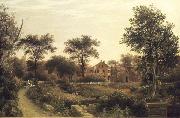 |
Samuel Lancaster Gerry -- Click Here
|
|
(1813-1891) was an artist in 19th-century Boston, Massachusetts. He painted portraits, and also landscapes of the White Mountains and other locales in New England. He was affiliated with the New England Art Union, and the Boston Artists' Association. In 1857 he co-founded the Boston Art Club.
Born in Boston, Gerry was self-taught as an artist. He showed works in many public settings, such as the 1841 exhibit of the Massachusetts Charitable Mechanic Association; and an 1879 exhibit of contemporary art at the Museum of Fine Arts, Boston. He attended the 1860 convention of the National Art Association in Washington, DC.
New England Homestead, 1839, by S.L. GerryStudents of Gerry included H. Frances Osborne, Samuel Green Wheeler Benjamin, Fannie Elliot Gifford, Charles Wesley Sanderson, and J. Frank Currier. With the exception of three years abroad, his professional life was passed chiefly in Boston
|
|
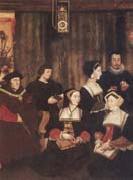 |
Rowland Lockey -- Click Here
|
|
English Baroque Era Painter, ca.1565-1616,was an English painter and goldsmith. The son of Leonard Lockey, a crossbow maker of the parish of St Bride's, Fleet Street, London, Lockey was apprenticed to Queen Elizabeth's miniaturist and goldsmith Nicholas Hilliard for eight years beginning Michaelmas 1581[1] and was made a freeman or master of the Worshipful Company of Goldsmiths by 1600. He worked mainly as a copyist of earlier portraits to make up sets of oil paintings for the fashionable long galleries of great houses, but signed or documented portrait miniatures on vellum and a signed title page engraving for the 1602 Bishops' Bible also survive. |
|
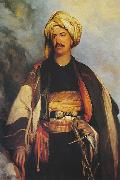 |
Robert Scott Lauder -- Click Here
|
|
Robert Scott Lauder (25 June 1803 - 21 April 1869) was a Scottish mid-Victorian artist who described himself as a "historical painter". He was one of the original members of the Royal Scottish Academy.
Lauder was born at Silvermills, Edinburgh, on 25 June 1803, the third son of John Lauder of Silvermills (died 1838), Burgess of Edinburgh and proprietor of the tannery at Silvermills, by his wife Helen Tait (d.1850). After attending the Royal High School he went to London, where his eldest brother William was engaged in the family business.
He returned to Edinburgh about 1826 and was elected one of the original members of the Royal Scottish Academy in 1830. On 9 September 1833 at St.Cuthberts in Edinburgh he married Isabella Ramsay Thomson and they then went abroad, accompanied by his younger artist-brother, James Eckford Lauder. Robert studied for some years in Rome, Florence, Bologna, Venice and Munich.
Lauder returned to London in 1838 where he lived for several years, where his three children - Isabella, John, and Robert, were baptised at St.Thomases Church, Southwark, in 1840, 1841, and 1844. Whilst in London he exhibited at the Royal Academy and competed in the Westminster Hall competition of 1847, sending his Christ walking on the Sea, which was subsequently purchased by Lady Angela Burdett-Coutts, 1st Baroness Burdett-Coutts. He became the first president of the short-lived National Institution of Fine Arts and also exhibited there.
He later removed back to Edinburgh in 1849 where both his sons - Robert Scott Lauder (born 1844), who became a physician, and John Thomson Lauder (1841-1865) - attended the Edinburgh Academy. Sir Walter Scott's novels provided him with subjects for many of his most successful historical paintings. About 1860 he suffered a paralytic stroke and did not practice after 1861. He died at Edinburgh from a bout of bronchitis on 21 April 1869, still paralysed. He is buried in Warriston Cemetery in Edinburgh. |
|
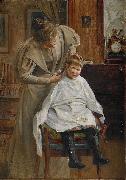 |
Robert Lundberg -- Click Here
|
|
painted Mother cutting the hair in 1899 |
|
 |
Robert Loftin Newman -- Click Here
|
|
(November 10, 1827 - March 31, 1912). was an American painter and stained-glass designer. He specialized in oil on canvas as his medium. He is sometimes associated with Albert Pinkham Ryder as a painter of mood. His works include Good Samaritan, painted in 1886, Flight into Egypt, Harvest Time, Sailboat Manned by Two Men, and The Bather.
He was born in Richmond, Virginia and moved to Clarksville, Tennessee when he was 11 years of age. Later, as a young adult, he studied art in New York, England, and France. Newman served briefly as an artillery lieutenant for the Confederate Army during the American Civil War. He died of asphyxiation from a gas leak from a stove on March 31, 1912. |
|
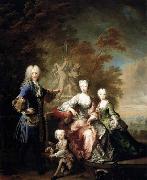 |
Robert Levrac Tournieres -- Click Here
|
|
Thomas William Robertson (9 January 1829 ?C 3 February 1871), usually known professionally as T. W. Robertson, was an Anglo-Irish dramatist and innovative stage director best known for a series of realistic or naturalistic plays produced in London in the 1860s that broke new ground and inspired playwrights such as W.S. Gilbert and George Bernard Shaw. |
|
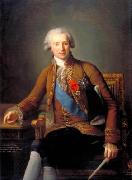 |
Robert Lefevre -- Click Here
|
|
(24 September 1755, Bayeux - 3 October 1830, Paris) was a French painter of portraits, history paintings and religious paintings. He was heavily influenced by Jacques-Louis David and his style s reminiscent of the antique.
Robert Lefevre made his first drawings on the papers of a procureur to whom his father had apprenticed him. With his parents' consent, he abandoned this apprenticeship and walked from Caen to Paris to become a student of Jean-Baptiste Regnault (in whose studio he met and became friends with Charles Paul Landon). At the 1791 Paris Salon he exhibited his Dame en velours noir, the point of departure for his reputation. Lefevre made 1805 the portait empress Josephine. 1807 manufactured the counterpart of emperor Napoleon Louis-Andre-Gabriel Bouchet. Napoleon gave both paintings to the city Aachen 1807, where they are today in the city hall and decorate the entrance hall. His other portraits of Napoleon, Josephine, Madame Laetitia, Guerin, Carle Vernet (a portrait which is now at the Louvre) and pope Pius VII made him a fashionable portrait artist and one of the main portraitists of the imperial personalities, a reputation sealed by his portrait of Napoleon's new wife Marie Louise. |
|
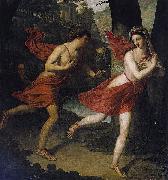 |
Robert Lefere -- Click Here
|
|
Robert Jacques François Faust Lefevre (24 September 1755, Bayeux - 3 October 1830, Paris) was a French painter of portraits, history paintings and religious paintings. He was heavily influenced by Jacques-Louis David and his style s reminiscent of the antique.
Robert Lefevre made his first drawings on the papers of a procureur to whom his father had apprenticed him. With his parents' consent, he abandoned this apprenticeship and walked from Caen to Paris to become a student of Jean-Baptiste Regnault (in whose studio he met and became friends with Charles Paul Landon). At the 1791 Paris Salon he exhibited his Dame en velours noir, the point of departure for his reputation. Lefevre made 1805 the portrait empress Josephine. 1807 manufactured the counterpart of emperor Napoleon Louis-Andre-Gabriel Bouchet. Napoleon gave both paintings to the city Aachen 1807, where they are today in the city hall and decorate the entrance hall. His other portraits of Napoleon, Josephine, Madame Laetitia, Guerin, Carle Vernet (a portrait which is now at the Louvre) and pope Pius VII made him a fashionable portrait artist and one of the main portraitists of the imperial personalities, a reputation sealed by his portrait of Napoleon's new wife Marie Louise.
On the Bourbon Restoration Robert Lefevre painted a portrait of Louis XVIII for the Chambre des Pairs and received the cross of the Legion d'honneur and the title of First Painter to the King, losing the latter on the July Revolution. He painted a large number of portraits and history paintings. The main example of his portraits are those of Malherbe (Bibliotheque publique de Caen), Charles X, the duchesse deAngouleme, the duchesse de Berry, Charles-Pierre-François Augereau duc de Castiglione (Musee de Versailles), and of Dominique Vivant-Denon. Two of his mythological paintings - Love sharpening his arrows and Love disarmed by Venus (t. 1,84 sur 1,30 ), were engraved by Desnoyers - the latter is reproduced in le Nu Ancien et Moderne. His most notable history paintings are his Phocion getting ready to drink hemlock, Roger delivering Angelique, Heloïse and Abelard and a Crucifixion for the Mont Valerien. His last painting was The Apotheosis of Saint Louis for the Cathedral of La Rochelle.
|
|
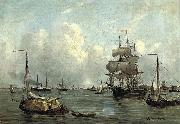 |
Robert Charles Laurens Gustave Mols -- Click Here
|
|
Belgium (1848- 1903 ) - Painter
painted Bustling activity in a Dutch harbour in |
|
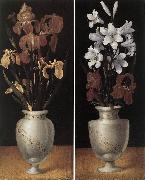 |
RING, Ludger tom, the Younger -- Click Here
|
|
German Painter, 1522-1584 |
|
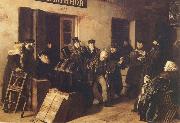 |
Pryanishnikov Illarion -- Click Here
|
|
1840-1894,Russian painter. He studied from 1856 to 1866 at the School of Painting, Sculpture and Architecture in Moscow and subsequently taught there (1873-94). Among his pupils were Sergey Ivanov and Sergey Korovin. Pryanishnikov was among the fifteen founder-members of the Peredvizhniki (WANDERERS) and contributed two works to their first exhibition. His narrative pictures of the 1860s embodied the critical trend in early Russian Realism and focused on the trials and sorrows of the lower classes; his Jokers (1865; Moscow, Tret yakov Gal.) shows a petty clerk performing stunts for the amusement of some wealthy merchants. The Convoy of Empty Sleds (1871; Kharkiv, Mus. F.A.) conveys a fine sense of the bleak winter landscape. His later work added northern scenery and genre scenes to his repertory as in Saviour Day in the North (1887; Moscow, Tret yakov Gal.) and Return from the Fair (1883; St Petersburg, Rus. Mus.). Pryanishnikov is also known for his hunting scenes. In 1893 he became a member of the St Petersburg Academy of Arts. |
|
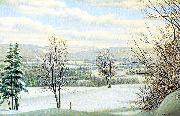 |
Prentice, Levi Wells -- Click Here
|
|
American, 1850-1935 |
|
 |
Popova, Liubov -- Click Here
|
|
Russian Constructivist Painter and Designer, 1889-1924 |
|
 |
Pietro Lorenzetti -- Click Here
|
|
Italian Byzantine Style Painter, ca.1280-1348 |
|
 |
Pietro Longhi -- Click Here
|
|
1702-1785
Italian
Pietro Longhi Galleries
Pietro Longhi was born in Venice in the parish of Saint Maria, first child of the silversmith Alessandro Falca and his wife, Antonia. He adopted the Longhi last name when he began to paint. He was initially taught by the Veronese painter Antonio Balestra, who then recommended the young painter to apprentice with the Bolognese Giuseppe Maria Crespi, who was highly regarded in his day for both religious and genre painting. He was married in 1732 to Caterina Maria Rizzi.
Among his early paintings are some altarpieces and religious themes. In 1734, he completed frescoes in the walls and ceiling of the hall in Ca' Sagredo, representing the Death of the giants. Henceforward, his work would lead him to be viewed in the future as the Venetian William Hogarth, painting subjects and events of everyday life in Venice. The gallant interior scenes reflect the 18th century's turn towards the private and the bourgeois.
Many of his paintings show Venetians at play, such as the depiction of the crowd of genteel citizens awkwardly gawking at a freakish Indian rhinoceros (see image). This painting chronicles Clara the rhinoceros brought to Europe in 1741 by a Dutch sea captain and impresario from Leyden, Douvemont van der Meer. This rhinoceros was exhibited in Venice in 1751. There are two versions of this painting, nearly identical except for the unmasked portraits of two men in Ca' Rezzonico version. Ultimately, there may be a punning joke to the painting, since the young man on the left holds aloft the sawed off horn (metaphor for cuckoldry) of the animal. Perhaps this explains the difference between the unchaperoned women.
Other paintings chronicle the daily activities such as the gambling parlors (Riddoti) that proliferated in the 18th century. In some, the insecure or naive posture and circumstance, the puppet-like delicacy of the persons, seem to suggest a satirical perspective of the artists toward his subjects. Nearly half of the figures in his genre paintings are faceless, hidden behind Venetian Carnival masks. Like Crespi before him, Longhi was commissioned to paint seven canvases documenting the seven Catholic sacraments.
Longhi is well-known as a draughtsman, whose drawings were often done for their own sake, rather than as studies for paintings. Pietro's son, Alessandro, was also an accomplished painter.
A paraphrase of Bernard Berenson states that "Longhi painted for the Venetians passionate about painting, their daily lives, in all dailiness, domesticity, and quotidian mundane-ness. In the scenes regarding the hairdo and the apparel of the lady, we find the subject of gossip of the inopportune barber, chattering of the maid; in the school of dance, the amiable sound of violins. It is not tragic... but upholds a deep respect of customs, of great refinement, with an omnipresent good humor distinguishes the paintings of the Longhi from those of Hogarth, at times pitiless and loaded with omens of change". |
|
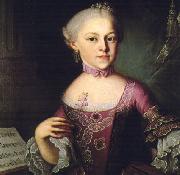 |
Pietro Antonio Lorenzoni -- Click Here
|
|
Pietro Antonio Lorenzoni (1721 - 1782) was an Italian painter who is believed to have painted several portraits of Wolfgang Amadeus Mozart and his family: "The Boy Mozart" (1763), his sister Maria Anna Mozart in "Nannerl as a Child" (1763) and a portrait of their father Leopold Mozart (c. 1765). He arrived in Salzburg, Austria in the 1740s and first wanted to paint Wolfgang and Nannerl. His protege, Johann Nepomuk della Croce, painted a Mozart family portrait in 1780. |
|
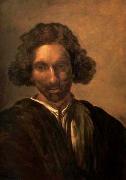 |
Pieter van laer -- Click Here
|
|
Dutch Baroque Era Painter, ca.1592-1642 |
|
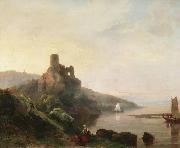 |
Pieter Lodewyk Kuhnen -- Click Here
|
|
painted Romantic Rhine landscape with ruin at sunset in 19th century
|
|
 |
Pieter Leermans -- Click Here
|
|
Pieter Leermans (ca.1635, Leiden - 1706), was a Dutch Golden Age painter.
he was a portrait painter of historical allegories. He is also known as Lieremans
Little is known of his life, but he is considered to be one of the Leiden fijnschilders
|
|
 |
Pieter Lastman -- Click Here
|
|
(1583 - 4 April 1633 (buried)) was a Dutch painter . Lastman is considered important because of his work as a painter of history pieces and because his pupils included Rembrandt and Jan Lievens. In his paintings Lastman paid a lot of attention to the faces, hands and feet.
Pieter Lastman was born in Amsterdam, the son of a town-beadle, who was dismissed in 1578 for being a Catholic. His mother was an appraiser of paintings and goods. His apprenticeship was with Gerrit Sweelinck, the brother of Jan Pieterszoon Sweelinck. Between approximately 1604 and 1607 Lastman was in Italy, where he was influenced by Caravaggio (as were the painters of the Utrecht School a few years later) and by Adam Elsheimer. Back in Amsterdam he moved in with his mother in the Sint Antoniesbreestraat, living next to mayor Geurt van Beuningen. Lastman never married although he promised to marry the sister of Gerbrand Adriaensz Bredero. Because of his health Lastman moved in with his brother in 1632. He died the next year and was buried in the Oude Kerk. |
|
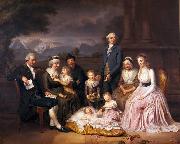 |
Pierre-Nicolas Legrand -- Click Here
|
|
(Pont-l'Éveque, 1758 - Bern, 1829) was a French painter.
Pupil of Descamps at the ole des Beaux-Arts de Rouen, along with Beljambe and Lequeu, Legrand won a second extraordinary prize in drawing, aged only 15. In 1782, he went to the ole des Beaux-Arts de Paris.
Circa 1794, Legrand de Serant departed for Bern, where he produced a variety of drawings for local notabilities and illustrated a novel by Isabelle de Charriere.
Legrand de Serant was a member of the Academie de Lille.
|
|
 |
Pierre Laprade -- Click Here
|
|
painted Femme accoudee in 1920 |
|
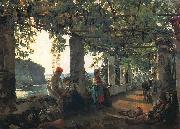 |
Pier Leone Ghezzi -- Click Here
|
|
(Rome, 28 June 1674 - Rome, 6 March 1755) was an Italian Rococo painter and caricaturist active in Rome.
Caricature of composer Antonio Vivaldi by Pier Leone GhezziGhezzi was born in Rome. His father, Giuseppe Ghezzi, (1634-1721), also trained Antonio Amorosi, and was a secretary to the Roman Accademia di San Luca. Pier Leone himself joined the Academy in 1705 and he executed a painting, the Allegory of Gratitude, to be donated to the institution, as was customary.
He was the godson of Carlo Maratta. Pier Leone is known for his frescoes in the Villa Falconieri of Frascati.
His pen and gouache caricatures are much freer in emotion than his state portraiture, and often depict named individuals or professions in satirical fashion.
|
|
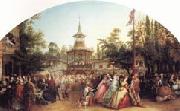 |
Phoebus Levin -- Click Here
|
|
fl. 1836-1878 was born in Berlin but exhibited in London from 1855-1878 |
|
|
|
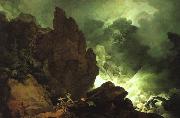 |
Philip James de Loutherbourg -- Click Here
|
|
1740-1812
French (Resident in UK)
Philip James de Loutherbourg Gallery
Philip James de Loutherbourg, also seen as Philippe-Jacques and Philipp Jakob and with the appellation the Younger (31 October 1740 ?C 11 March 1812) was an English artist of French origin.
He was born in Strasbourg, where his father, the representative of a Polish family, practised miniature painting; but he spent the greater part of his life in London, where he was naturalized, and exerted a considerable influence on the scenery of the English stage, as well as on the artists of the following generation. De Loutherbourg was intended for the Lutheran ministry, and was educated at the University of Strasbourg.
As the calling, however, was foreign to his nature, he insisted on being a painter, and placed himself under Charles-Andr?? van Loo in Paris. The result was an immediate and precocious development of his powers, and he became a figure in the fashionable society of that day. In 1767 he was elected into the French Academy below the age required by the law of the institution, and painted landscapes, sea storms, battles, all of which had a celebrity above those of the specialists then working in Paris. His debut was made by the exhibition of twelve pictures, including Storm at Sunset, Night, Morning after Rain.
He is next found travelling in Switzerland, Germany and Italy, distinguishing himself as much by mechanical inventions as by painting. One of these, showing quite new effects produced in a model theatre, was the wonder of the day. The exhibition of lights behind canvas representing the moon and stars, the illusory appearance of running water produced by clear blue sheets of metal and gauze, with loose threads of silver, and so on, were his devices. In 1771 he came to London, and was employed by David Garrick, who offered him £500 a year to apply his inventions to Drury Lane, and to superintend the scene-painting, which he did with complete success, making a new era in the adjuncts of the stage. Garrick's own piece, the Christmas Tale, and the pantomime, 1781-1782, introduced the novelties to the public, and the delight not only of the masses, but of Reynolds and the artists, was unbounded. The green trees gradually became russet, the moon rose and lit the edges of passing clouds, and all the world was captivated by effects we now take little notice of. A still greater triumph awaited him on his opening an entertainment called the Eidophusikon, which showed the rise, progress and result of a storm at sea that which destroyed the great Indiaman, the Halsewell,and the Fallen Angels raising the Palace of Pandemonium. De Loutherbourg has been called the inventor of the panorama, but this honor does not belong to him, although it first appeared about the same time as the eidophusicon. The first panorama was painted and exhibited by Scottish painter Robert Barker. |
|
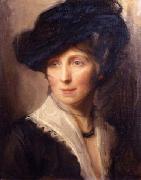 |
Philip de Laszlo -- Click Here
|
|
MVO (born 30 April 1869, Budapest - died 22 November 1937, London) was a Hungarian painter known particularly for his portraits of royal and aristocratic personages.
Leszle was born in Budapest as Laub Felöp Elek (Hungarian style with the surname first), the eldest son of a Jewish tailor. The family changed its name to Leszle in 1891. He apprenticed at an early age to a photographer while studying art, eventually earning a place at the National Academy of Art, where he studied under Bertalan Szekely and Keroly Lotz. He followed this with studies in Munich and Paris. Leszle's portrait of Pope Leo XIII earned him a Grand Gold Medal at the Paris International Exhibition in 1900. In 1903 Leszle moved from Budapest to Vienna. In 1907 he moved to England and remained based in London for the remainder of his life, although traveling the world to fulfill commissions. |
|
|
|
|
| | |
|
|
|
|